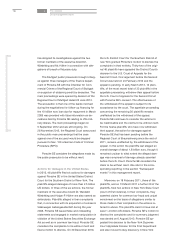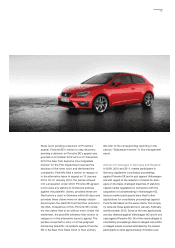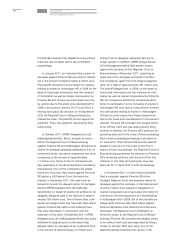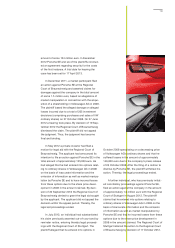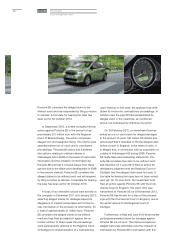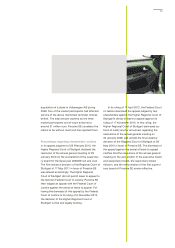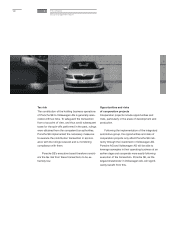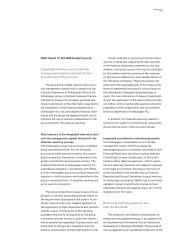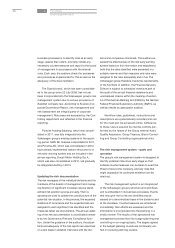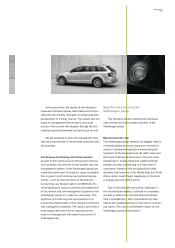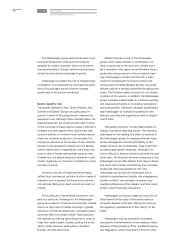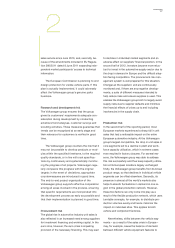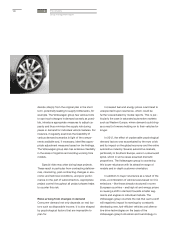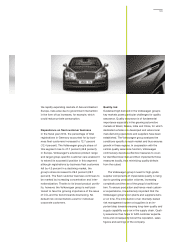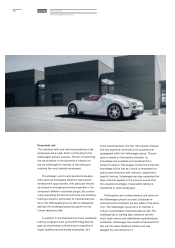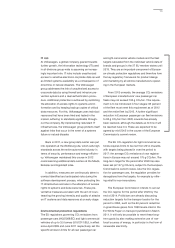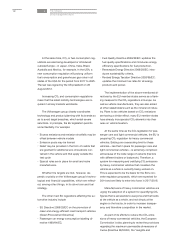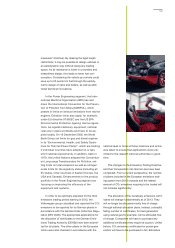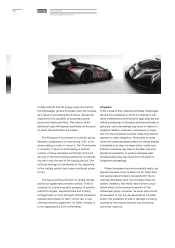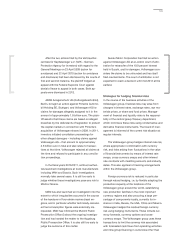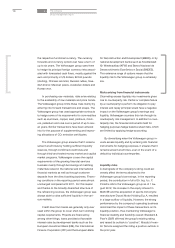Porsche 2012 Annual Report Download - page 130
Download and view the complete annual report
Please find page 130 of the 2012 Porsche annual report below. You can navigate through the pages in the report by either clicking on the pages listed below, or by using the keyword search tool below to find specific information within the annual report.
The Volkswagen group sees further risks in pro-
tectionist tendencies in the economic policies
adopted by certain countries, which could lead to
the implementation of trade restrictions and hence
hinder the international exchange of goods.
Volkswagen considers the risk of renewed glob-
al recession to be relatively low, but sees the possi-
bility of a prolonged period of below-average
growth due to the factors mentioned.
Sector-specific risk
The growth markets of Asia, South America, and
Central and Eastern Europe are particularly im-
portant in terms of the global trend in demand for
passenger cars. Although these markets harbor the
greatest potential, the overall environment in some
of the countries in these regions makes it difficult to
increase unit sales figures there. Some have high
customs barriers or minimum local content require-
ments for domestic production, for example. Fol-
lowing the reduction in the number of new vehicles
allowed to be registered in places such as Beijing,
further restrictions on registrations could enter into
force in other Chinese metropolitan areas as well.
Furthermore, the global economic slowdown could
impact negatively on consumer confidence in some
of these countries.
Likewise, the risk of freight deliveries being
shifted from commercial vehicles to other means of
transport and of demand for the group’s commer-
cial vehicles falling as a result cannot be ruled out
entirely.
Price pressure in established automotive mar-
kets is a particular challenge for the Volkswagen
group as a supplier of volume and premium models
due to its high level of market coverage. If global
economic conditions deteriorate, competitive pres-
sures are likely to increase further. Manufacturers
will respond by offering price discounts in order to
meet their sales targets, thereby putting the entire
sector under pressure, particularly in Western
Europe, the USA and China.
Western Europe is one of the Volkswagen
group’s main sales markets. A combination of a
drop in prices due to the economic climate and a
fall in demand in this region would therefore have a
particularly strong impact on the company’s earn-
ings. Volkswagen counters this risk with a clear,
customer-oriented and innovative product and
pricing policy. Outside Western Europe, its overall
delivery volume is broadly diversified throughout the
world. The Chinese market accounts for an increas-
ing share of the volume. In addition, the Volkswagen
group is already market leader in numerous existing
and developing markets or is working resolutely to
take pole position. Moreover, strategic partnerships
help Volkswagen to increase its presence in the
relevant countries and regions and cater to require-
ments there.
The global economic climate deteriorated no-
ticeably during the reporting period. The resulting
challenges for the trading and sales companies of
the Volkswagen group, for example efficient ware-
house management and the profitability of the
dealer network, are considerable. They meet them
by taking appropriate measures. Although it re-
mains difficult to finance business activities through
bank loans, the financial services companies of the
Volkswagen group offer dealers financing on attrac-
tive terms with the aim of bolstering their business
model and reducing operational risk. The
Volkswagen group has also developed and in-
stalled a comprehensive liquidity risk management
system so that it can promptly counteract any
liquidity bottlenecks at the dealers’ end that could
hinder smooth business operations.
Volkswagen continues to approve loans for ve-
hicle finance on the basis of the same cautious
principles applied in the past, taking into account
the regulatory requirements of Sec. 25a (1) of the
KWG.
Volkswagen may be exposed to increased
competition in aftermarkets for two reasons: firstly,
because of the provisions of the new Block Exemp-
tion Regulation, which have been in force for after-
2The company
Group management report
2126


